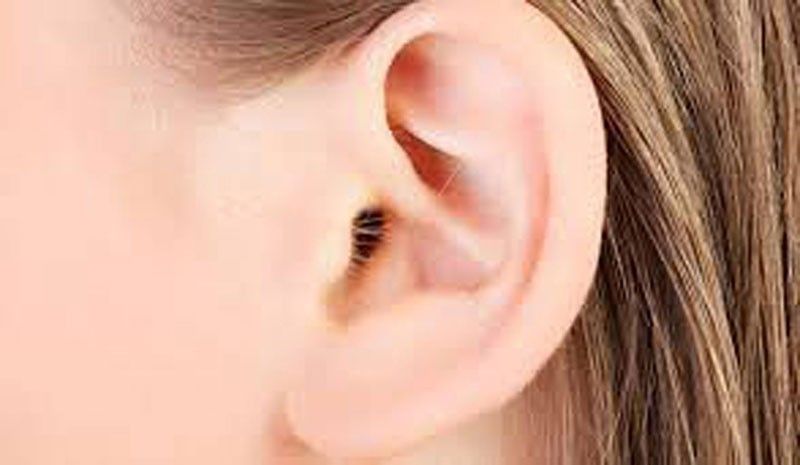Getting deaf? It may be due to earwax buildup!


Then there’s the matter of self-indulgence. My brothers, cousins and friends are guilty of it and so am I: Don’t you just love to swab the ears after a hot shower to address the itchy and ticklish sensation? My husband cautioned me on this obsessive habit. “Wax protects the ear from foreign objects and bacteria, etc.”
Still, old habits die hard, until a friend shared a video clip of an insect entering the ear of a sleeping woman.
It crawled deep into the canal and lodged itself where it could not be pulled out except through surgery. From that time on, I stopped cleaning my ears. Mind you, I still used cotton buds to twirl into the ridges of my ear, particularly the concha (shell-shaped outer ear), but I never went inside the ear.
Weeks passed and I remained reticent — smiling secretly — not sharing with anyone my newly acquired “no-wax-removal” routine. And then, wham! Piercing silence. There was this vacuum-like echo in my ear that was only broken by the intermittent pop of what sounded like a champagne cork followed by crackling and fizzing. My hearing difficulty was so acute that I had to press the up button on the volume control and worse I could only watch movies with sub-titles.
Today, my husband wriggled his neck next to mine and asked, “Are you getting bingi? You haven’t replied to my question.” I snapped, “First, I was half asleep. Second, I heard nothing, as in zilch, nada, zero.”
When I told a friend about it, she replied, “Bah! Don’t worry! If you must wear a hearing aid, they’re so tiny now that people won’t see it.” This drove me to seek an ear, nose and throat specialist — Dr. Ana Santos, an otolaryngologist.
After a brief interview, she gave me a look that snugly pinpointed the heart of my problem. “Let’s check your ears,” she smiled. She poked an otoscope in my ear but quickly pulled it out. “You’re deaf all right but not because of any infection or bacteria. It’s earwax buildup. I’ll clean it up.” Shoulders relaxed and humming the Beatles’ “Listen, do you want to know a secret?” She pulled out the pesky wax. In my head, I swear I heard my grandson Gab scream, “Nonna! That’s the height of yuckiness.”
Gab was right. It’s an icky, albeit necessary part of many a beauty routine. But are you cleaning your ears correctly?
Dr. Santos gave me the Earwax 101:
What is it? Also known as cerumen, it is secreted in the ear canal. Color ranges from yellowish to reddish brown. Wax forms in the skin of your ear canal and protects you against bacteria, fungi, insects and water entering the deeper part of the ear.
Earwax is comprised of shed skin cells, as well as hair, and the secretions of the ceruminous and sebaceous glands of the outside ear canal. Earwax is a normal secretion, “Actions of the jaw, such as talking and chewing, help to move the wax out of the canal.” In other words, earwax “is constantly traveling towards the outer ear where it can come out.” Occasionally, however, a build-up of earwax can occur. This excess or compacted earwax can press against the eardrum and/or block the outside ear canal, causing hearing difficulties, tinnitus, itching, vertigo or pain.
How to remove earwax
The idea is not to eliminate the wax entirely, but simply to keep it from blocking your ear. While cotton buds help remove ear wax, studies have shown that this method often removes only a small portion of the top layer of wax, pushing the rest further into the ear canal. In some cases, the cotton head may cause damage to the ear canal or even fall off and become lodged in the ear canal. Therefore, cotton tips should be used only to clean the external ear.
Experts generally agree that more invasive removal methods (including those that involve suction, irrigation with a syringe or small forceps or spoons) should only be carried out by a general practitioner GP or ear specialist, or individuals who have been sufficiently trained in the procedure. That means your barber or salon beautician must be specifically trained to clean your ear.
What not to do
Ramming small objects, buds or syringes into your ear repetitively can damage the fragile tissue of your ear, or even perforate the eardrum. Abrasion of the ear canal, particularly after water has entered from swimming or bathing, can also lead to an ear infection. Ear syringes are best left to a GP or ear specialist.
Finally, it is important not to over-clean your ears, as this can cause inflammation and irritation. To remove a small to moderate amount of wax, experts recommend cleaning your ears just once a week.
In my case, Dr. Santos recommended to clean it every couple of days. Smiling now, I shared the good news with my husband. “From now on, I will listen to the doctor,” I promised. He laughed, “Loud and clear.”
Yay! I heard that.



















